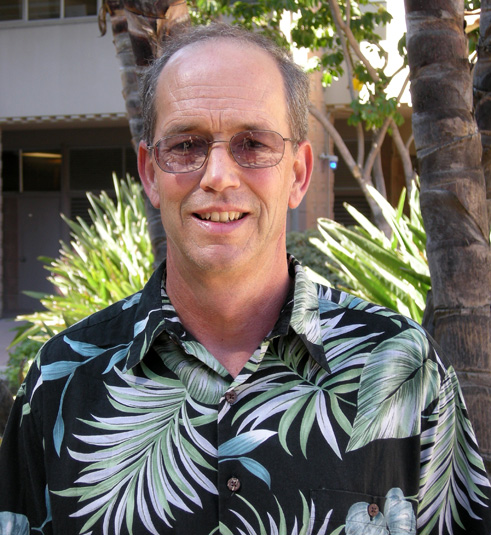Colin Schultz, a science writer affiliated with the American Geophysical Union, recently notified Professor Libe Washburn that “The editors have selected your Journal of Geophysical Research – Oceans paper, entitled ‘The propagating response of coastal circulation due to wind relaxations along the central California coast,’ as an AGU Research Spotlight.” (Citation: Washburn, L., M. R. Fewings, C. Melton, and C. Gotschalk [2011], The propagating response of coastal circulation due to wind relaxations along the central California coast, J. Geophys. Res., 116, C12028, doi:10.1029/2011JC007502; full text here.) The following general summary of Dr. Washburn’s paper was published in the JGR-Oceans’ online edition, as well as in the “Research Spotlight” column of the AGU online newspaper Eos, under the title “Central California’s warm waves clue to changing coastal currents”:
“A quarter of the way up the crest of the Californian coast, a giant L-shaped headland reaches out to a peak at Point Conception. To the north of the headland, winds blowing off the Pacific Ocean induce strong coastal upwelling, bringing cold ocean water to the surface. To the east of Point Conception, warm water travelling up the Californian coast gets trapped in the Santa Barbara Channel, its path blocked by the upwelling to the west and the Santa Cruz, Santa Rosa, and San Miguel islands to the south. Previous research showed that when a low pressure system passes through the region, the upwelling-inducing winds can die down, freeing the warm water trapped in the Santa Barbara channel to continue its poleward journey. Using satellite, high-frequency radar, and instrumented moorings to observe water temperature and current velocity, Washburn et al. determined the intricacies of these poleward propagating warm water flows.
Combining information gathered from 130 warm water waves from 2000 to 2006, the authors found that, following the relaxation of upwelling-inducing winds, a 15 kilometer wide plug of water 1 to 4 °C above ambient temperatures would round Point Conception, travelling northward at 0.1 to 0.2 meters per second. The increased temperatures, which spanned the depth of the water column near shore, were joined by shifts in the coastal currents—surface waters moved toward the shore, mirrored by seaward flows at depth. The authors suggest the poleward propagation was driven by pressure differences between either side of the headland, adding to the scant observational support of a recent theory of coastal current behavior. Above its potential utility as a predictor of superb swimming conditions, the research could help scientists understand the role of warm water waves in controlling pollutant distributions, animal activity, and sediment movement in similar coastal regions worldwide.”
The Journal of Geophysical Research–Oceans is an AGU publication which “embraces the application of physics, chemistry, biology, and geology to the study of the oceans and their interaction with other components of the Earth system. Deepening the integrated knowledge of the sea utilizes new observational, analytical, computational, and modeling capabilities to build upon established approaches in all areas of marine science” (source). As the premier international newspaper of the Earth and space sciences, the AGU’s Eos publication “seeks to forge strong interdisciplinary ties among geophysicists and place the important contributions of geophysics in the context of the social and policy-making arenas. More than 61,000 Earth and space scientists worldwide rely on Eos for timely articles that offer solid overviews of topics central to broad research questions; updates on major projects and programs; news items; meeting summaries; opinion pieces; book reviews; and announcements of job opportunities, grants, and fellowships.” (source).
Editor’s note: Many thanks to Professor Washburn for providing the material for this article.





